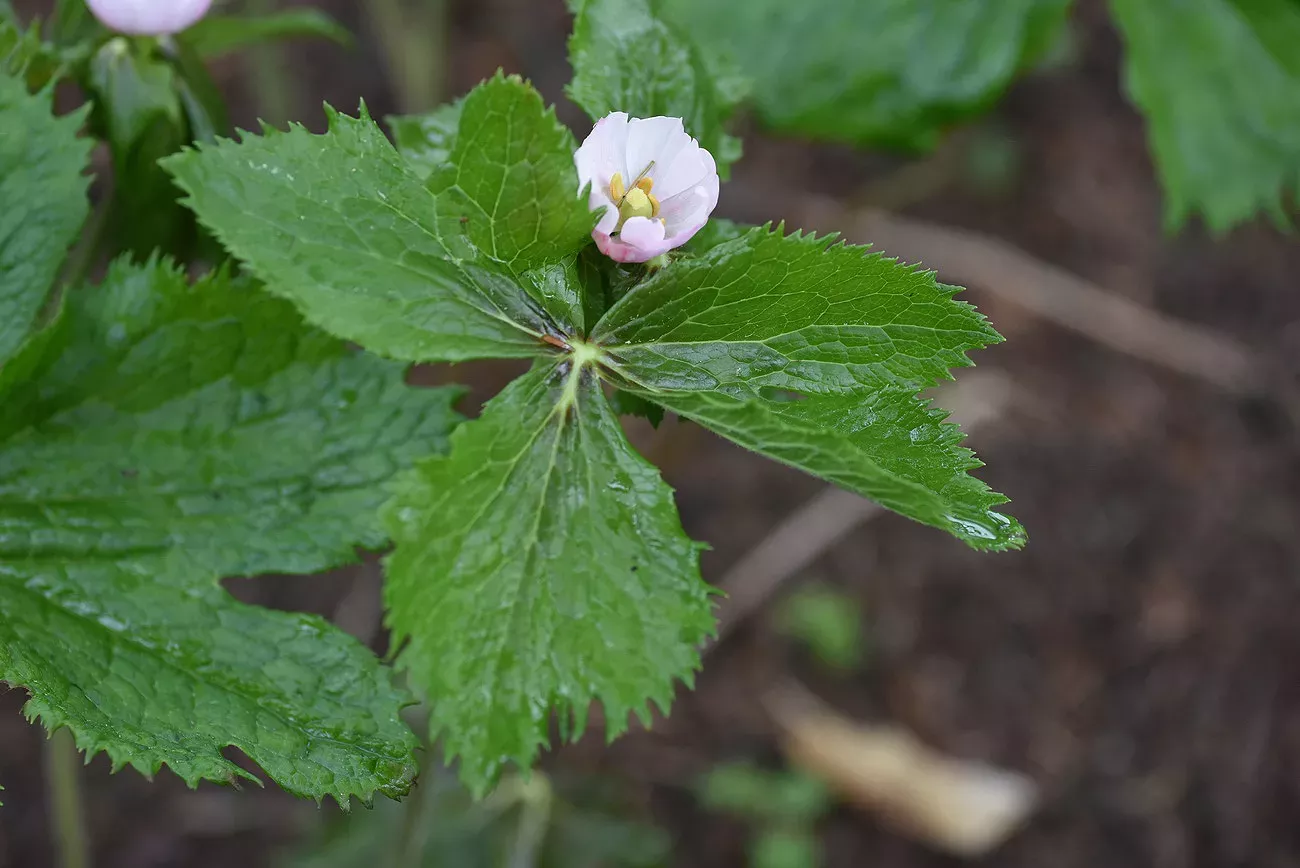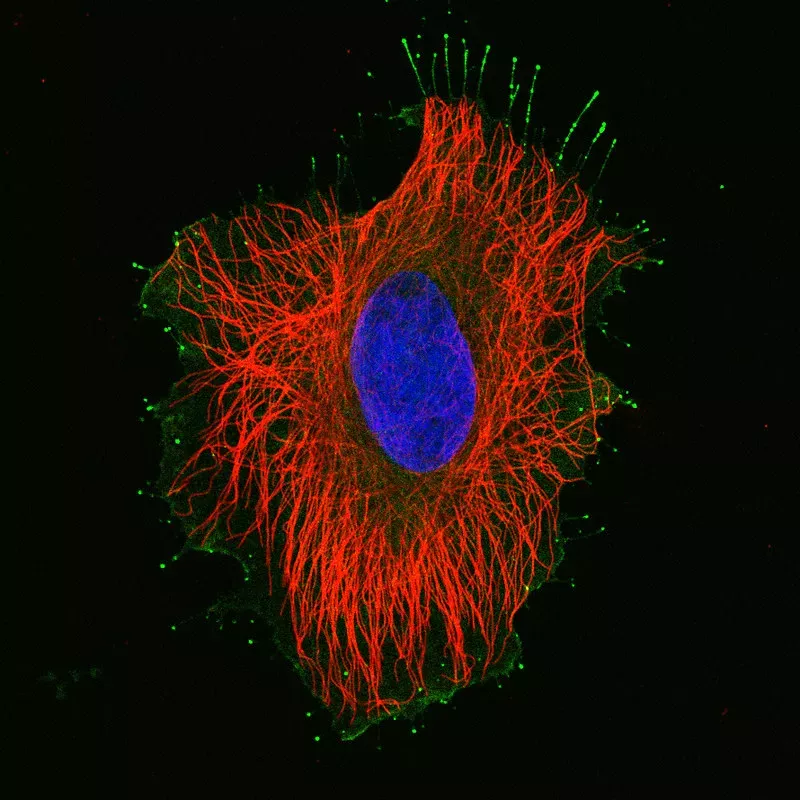15 May 2024
Why do plants make cancer drugs?
Plants have already given us numerous options for treating cancer, but are there any more waiting to be discovered?
.jpg2a50.webp)
It's rather strange that plants make cancer chemotherapy drugs don’t you think?
It's not just one example. There is 'vinblastine' and 'vincristine', which are derived from the Madagascan periwinkle Catharanthus roseus and are used to treat Hodgkin’s disease, a type of leukaemia. Other examples include 'paclitaxel', from the pacific yew tree Taxus brevifolia, which grows in the pacific forests of North America, and 'etoposide' and 'teniposide', derivatives of podophyllotoxin, found in the American Mandrake plant Podophyllum peltatum.
These cancer drugs are based on discoveries made decades ago.
A much more recent example is the ridiculously hard to pronounce 'trastuzumab emtansine', which is also known as 'Kadcyla'.
The emtansine part of this molecule is a derivative of a chemical extracted from an African plant in the genus Maytenus. This toxic plant molecule has been attached to an antibody that guides it to breast cancer cells, a bit like a heat seeking missile. This makes it much less toxic to healthy cells than if the plant molecule were used by itself.
Kadcyla is one of the most expensive cancer medicines to date and made headlines in the UK because the medicines regulator NICE initially refused to fund its use in the NHS. So, drug discovery from plants is very much a current affair, and that’s not to mention the role of fungi, where, as colleagues and I discuss in a new paper, a revolution in drug discovery is taking place.

Why do plant drugs kill cancer?
We can agree that plants are largely oblivious to human suffering, so why do they make these compounds, is it just random chance? To answer that we need to think about their possible function in natural ecosystems.
Something all these plant molecules have in common is that they are ‘cytotoxic’. In medical research when we say cytotoxic we generally mean that the molecules are toxic to human cells, but most of these compounds are toxic to cells of other organisms as well.
Most of these plant derived cancer drugs kill cancer cells either by causing DNA damage, or by interfering with ‘microtubules’, tiny structures inside cells that form the cells skeleton. Whatever the mechanism, the outcome is the same, the cancer cells undergo ‘programmed cell death’ and shut themselves down.
It seems that some cancer cells are particularly susceptible to having their microtubules interfered with or their DNA damaged. Their selfish desire to divide quickly and consume surrounding nutrients means they take a greater hit from these toxic plant chemicals compared with more slowly dividing non-cancer cells, and this provides a benefit to a person suffering from cancer.

What does a plant use anti-cancer compounds for?
Plants can’t run away from their predators so they depend on chemical defences instead.
Imagine a caterpillar that feeds on lettuce leaves in your garden, or a fungal mould that grows on a sliced tomato in your fridge. They may get away with that on a lettuce or tomato, but if they were to try the same stunt on one of the plants that we’ve sourced these anti-cancer drugs from they may be in for a bit of shock.
That’s because the basic structure of DNA or microtubules is essentially the same from human to caterpillars to fungi. It turns out caterpillars and fungi don’t like having their DNA damaged or their microtubules interfere with any more than cancer cells do. These cytotoxic plant chemicals that are intended to stop predators munching the leaves of their host plant, inadvertently also kill cancer cells.

Testing plants to fight cancer
Very occasionally, plants make cytotoxic chemicals that act in such a specific way that they kill cancer cells more than they kill healthy cells. These so-called selective compounds are the holy grail of drug discovery.
We often see stories in the newspapers about a chemical compound found in a trendy new super food that can “kill cancer cells”, but journalists who love such stories should surely ask themselves, can it discriminate between cancer cells and non-cancerous cells? If simply killing cancer cells in a petri dish is aim of the game, then we’ve already done that lots of times at Kew. Finding a chemical that selectively kills cancer cells but not normal cells is way harder.
.jpg2c57.webp)
Searching Earth’s plants for the next cancer drugs
There are almost certainly plants out there that contain the selective compounds we’re searching for. If you are taking a stroll around Kew gardens one fine afternoon, home to one of the biggest collections of plants in the world, it is entirely possible that you may inadvertently walk past a plant that contains a novel compound with cancer fighting properties. The problem is that if no one has tested it, we cannot know it exists.
Most of the plant-derived drugs I mentioned earlier owe their discovery to screening programmes such as the National Cancer Institute screening programme, carried out between 1960 and 1981, when 35,000 plant species were screened against cancer cells.
However, they couldn’t and didn’t test all the plants in the world, (we now know there are as many as 400,000), and they were also using the technology that was available at the time: which means that work like this could be done far more easily today.
At Kew, we have a laboratory dedicated to testing plant compounds on human cells including cancer cells. Working with scientists in countries such as Indonesia and Cameroon, we identify novel compounds from plants and then test them on melanoma cancer cells.
For now, these projects are small-scale, but, with funding, we could easily scale that up to test many thousands of plants extracts on different types of cancer cells using a laboratory robot. If we do that, who knows what we may find: nature has a habit of throwing up curious results when you least expect it.




